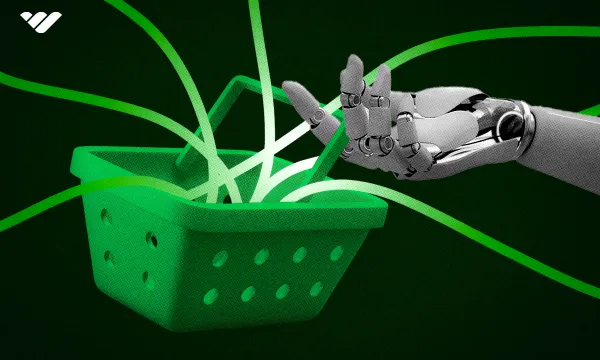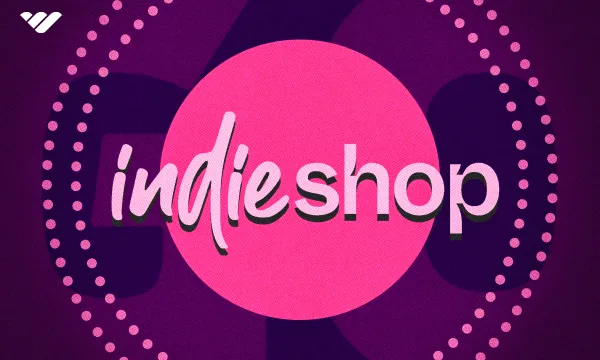All online businesses, no matter how experienced, want to bring more traffic to their store. Higher traffic leads to higher sales, yet driving traffic to your online shop is no easy feat. Even the most experienced marketers and entrepreneurs can struggle when it comes to increasing web traffic.
That’s why we have created an informative list of ecommerce marketing ideas. In this article, we will uncover some of the best ways to bring new people to your online store, convert these visitors into customers, and keep them coming back for the long run.
Read on to find out how you can bring more customers to your ecommerce shop and also encourage your existing customers to spend more!
What is Ecommerce Marketing?
To put it simply, ecommerce marketing is the use of promotional tactics to drive traffic to your online store, lead customers to buy your product, and increase customer retention after a sale. Therefore, the three main aims of ecommerce marketing are to drive traffic, convert visitors, and retain customers.
It is important to consider all three of these goals and not stop at simply driving traffic. Bringing traffic to your site is worthless if the visits do not convert into sales. Then, if you stop at converting visitors, you miss out on retaining customers. Without good customer retention, you spend time and money bringing in new customers rather than benefiting from repeat sales of existing customers.
A successful ecommerce marketing strategy will help you to increase your brand awareness, generate online sales, and foster customer loyalty. Let’s take a look at the top 13 ecommerce marketing strategies for 2023.
The Best Ecommerce Marketing Strategies
Now that we have covered what ecommerce marketing actually is, you might be wondering ‘what is the best ecommerce marketing idea for my business?’. Well, every business is different, so what works for someone else may not work well for you. Your marketing strategy should be tailored to your own needs.
To begin, consider what your goals are. Remember that you want to have a balance of bringing customers in, converting this to sales, and then retaining customers for repeat sales. So, you ideally want to have all three for a robust marketing strategy. If you already have a successful campaign in place that is bringing visitors to your site, focus instead on how you are going to convert and keep these customers. If you have a high level of customer retention but low traffic, turn your focus to how to drive traffic to your online storefront.
You also need to create a flexible timeline for each of your strategies. Map out how quickly you expect to see results - some results are almost instant (like abandoned cart tactics) whilst others are a slow burn (such as SEO marketing). Aim for a mix of short and long-term strategies to maximize your business growth.
Last (but most definitely not least) choose tools to support your marketing strategies. There are so many ecommerce marketing tools that can integrate with your existing platform and help your brand to grow. These tools can take care of everything from email automation, to 24/7 customer service, and beyond.
👉 If you sell a digital product, then Whop has a great range of tools for business and can help you to successfully level up your business.
13 Ecommerce Marketing Ideas to Boost Your Business 💡
We have taken 13 ecommerce marketing ideas and divided these into three categories.
If you’re looking to bring more people to your online store, check out the ‘driving traffic’ strategies. Then, read ‘converting customers’ to understand how to transform a visitor from a browser to a buyer. Finally, finish up with our ‘ecommerce retention techniques’ to understand how you can keep your customers coming back again and again.
Ecommerce Marketing to Drive Traffic
Start Selling on Marketplaces
Amazon, Etsy, eBay, and even Facebook - all of these have successful digital marketplaces collectively bringing in trillions of dollars a year. According to Oberlo, there are 2.64 billion online shoppers in 2023. That’s a huge one-third of the population buying goods digitally. So, if you want to get your product in front of a large and ever-growing audience, put it on an online marketplace!
With marketplaces, potential customers can easily find your brand by simply browsing categories or specific products. Many customers swear by marketplace shopping, searching through multiple sites to find the best price for what they want. This is why you should not rely on only your dedicated online shop. Use a digital marketplace to reach a new customer base, and put your top products in this extra online store.
- Cost: Varies. Some marketplaces require ongoing platform fees, others take a % of sales
- Time: Short to long-term
👉 If you sell a digital product like access to an online community, eBooks, software, Chat GPT plugins, or more, sign up with Whop today! Getting started as a seller with Whop takes less than 10 minutes. There are thousands of digital goods sellers on the Whop marketplace, and more than 100 million $ has been processed through Whop. Check out the seller documentation to learn more.
Invest in Influencer Marketing
Influencers are everywhere, convincing viewers to purchase the products and services they use through subtle or direct marketing tactics. Many viewers don’t even know that they are being ‘influenced’ - they just want to buy a product that their favorite online celebrity is using.
There are many reasons that influencer marketing works. Some people buy a product promoted by an influencer to feel closer to that person. Others buy the product because they want to become more like that person (this is usually the case with health and fitness influencers). All buyers make the purchase because they trust in what this influencer has to say about the product. As a result, influencers have the power to alter their audience’s purchasing behavior.
Working with an influencer can put your product in front of a wide audience. However, before you jump straight into messaging any and every influencer you come across, you need to do your research. Influencers, whilst highly influential, can also be controversial. Take your time to dive deep into the influencer’s branding, past partnerships and affiliations, any strong views or stances that they share online, and, of course, their audience.
When you have chosen an influencer who aligns with your target audience, values, and branding, reach out to them about how you can work together.
- Cost: Varies. Micro-influencers may offer promotion in exchange for products, large influencer fees can reach into the tens of thousands
- Time: Short to medium-term
Launch an Affiliate Program
An affiliate program is another way to have people share your product on social media. Unlike influencer marketing, affiliate programs make use of your existing customer base.
While influencer marketing puts your product in front of one individual’s large following, affiliate programs encourage all other users of social media (aka non-influencers) to share your product online in return for sales commission. Do not underestimate the power of influencer marketing - this ecommerce marketing tactic can turn your loyal fans into an incredible sales team.
All you have to do is set up an affiliate program that allows individuals to receive a commission on sales made through sharing their link. The bonus is that you do not pay anything upfront. The affiliates only earn money if they are bringing in money.
It’s important to stay on top of your affiliate marketing program. Whop can help here, with the Whop Affiliates home page giving you insight into your affiliate’s sales, commission, and overall success.
- Cost: Minimal - you set the commission percentage
- Time: Short to medium-term
Read more about affiliate marketing with Whop here
Get Serious About SEO
An often overlooked aspect of driving traffic to your site is SEO. SEO, or Search Engine Optimization, is the process of optimizing a website in order to make the site more easily findable and readable. Essentially, SEO is what makes a website deemed relevant and useful for a user searching for a product, answer to a question, person - anything. The better the SEO, the higher search engines rank the page, and the easier it is for new customers to find you. SEO is a complex beast - there is so much that goes into it, from page loading speed and performance to metadata, image alt text, and of course, content. Let’s take a look at just a few of the aspects of SEO.
Firstly, there is your page content. What is your product? What are you trying to sell? Undertake keyword research and consider what your target audience needs to be searching in order to come across your site. For example, let’s imagine that you have a fitness app named ‘Fun Fitz’. Think about how customers are going to find you. While existing customers can search your product name and find your website, how can new customers come across your page without knowing your business name? Would they be searching for ‘budget fitness app’, ‘easy ways to get fit’, ‘free fitness app’, or something else? The aim is to target people browsing for a solution and lead them to the answer on your page.
Keywords and search terms are only one part of on page content. You must also pay attention to your product titles and descriptions, the alt-text and captions of any images, and the headings of any blogs. Some writers fall into the trap of using overly technical terms - instead, use language that your customers can easily understand. Additionally, consider what search engines need to rank your site. Things like title tags, meta descriptions, and site maps all help to push your site up the SEO ladder.
- Cost: Low if you take care of it yourself, however, it is worth investing in a salaried SEO manager, as SEO is a time-consuming, ongoing process that requires a lot of specialist knowledge
- Time: Medium to long-term
Partner with Complementary Brands
Influencer marketing connects you with high-profile names, affiliate marketing allows you to work with your customers, but what about partnering with other brands? A well-loved mantra of many successful businesses is ‘collaboration over competition’, and for good reason.
Begin by researching other brands in your niche. You want to find a brand with a very similar target audience but a different product, one that complements your own. For example, if you sell a fitness app, you could partner with a healthy meal service. There are many ways that you could collaborate with a partner brand. Some brands hop on podcasts or ‘lives’ together and connect that way. Others connect by offering discounts to the partner brand’s products through their own audience. There are even brands that create collaborative products (think Doritos x Taco Bell).
Overall, partnering with another brand means that you can leverage an existing brand’s audience to join your business ecosystem.
- Cost: Varies - discount codes can be low-cost, whereas limited-edition co-branded products will be on the higher end
- Time: Short to long-term
Ecommerce Marketing Tactics to Improve Your Conversion Rate
Once you have successfully driven new customers to your site, it's time to convert these browsers into buyers!
Use Your Email List Efficiently
As an ecommerce business owner, it is so important to have a strong email marketing strategy. You need to be collecting as many emails as you can and making sure that you are putting this mailing list to good use.
There is a fine line between creating value for your mailing list and becoming another annoying inbox filler. Put yourself in the shoes of your customer and consider what you would like to receive as an email, and how often you would want to receive emails. Some businesses can successfully provide value on a daily basis - like a daily news bulletin, while others are more suited to a monthly round-up of key business events.
Another key aspect of email marketing is giving value back to your readers. Sharing business updates may be interesting for you, but what is in it for them? If you want to celebrate a milestone, do so with a special discount for your mailing list! Launching a new product? Mark this with a promotional offer for your loyal customer base. Email marketing is also a great way to promote your affiliate program too, encouraging readers to share your business product in exchange for a commission or simply some free merch.
You can capture emails on your site in exchange for a new customer discount, on social media, and on digital marketplaces.
- Cost: Varies, depending on the requirements of your business
- Time: Medium to long-term
Whop's email marketing solution helps you to have well-designed and high-performing email solutions. From email automation setup to an enterprise package including revenue tracking, template updates, and more, Whop has your email marketing covered!
Make it Easy to Spend Money in Your Store
No matter how many visitors you bring to your online store, if they can’t find what they want pretty quickly then they will leave and shop elsewhere. Searching endlessly for a certain product, its details (such as price, delivery), payment options, and so on, is frustrating and off-putting. If you’re losing customers, then you’re losing revenue.
A well-created ecommerce store should clearly showcase what the store sells and why. It should have a clear value proposition, easy-to-read font, and language (get rid of that complicated jargon!), and clear categories and pages for navigation. Plus, the site should be calming and simple, with purposeful images and a design aligned with your store’s purpose. Create an online store that draws people in, makes them feel that they have found a high-quality solution, and leads them to checkout and purchase your product with ease!
Take a look at any of the storefronts on Whop marketplace to see examples of simple yet effective business storefronts.
- Cost: Varies depending on how many changes you need to implement, and whether you can make changes to your existing storefront for free
- Time: Short to long-term
Put User-Generated Content to Good Use
So you have a great website and an even better product, but how does the buyer know that what you are selling is the real deal? They head to the review section!
According to Trust Pulse, over ‘99.9% of customers read reviews when they shop online. 96% of customers specifically look for negative reviews.’ Plus, ‘60% of consumers believe the number of reviews a business has is crucial when deciding whether to use its services.’
It’s clear that first and foremost you must have customer reviews as a key part of your ecommerce storefront. Negative reviews will appear every once in a while, but these reviews can actually be a great tool to help you improve how you run your business. Additionally, customers pay attention to how you respond to negative reviews. If your responses are combative, they will not want to do business with you. Or, if you do not respond to negative reviews at all, they may come to the conclusion that you do not value your customer. However, if you respond to most (if not all) reviews - positive and negative - then potential customers will see that your business is responsive and cares about customer service.
However, user-generated content, or UGC, doesn’t just come in the form of reviews. You can post photos of customers using your products (with their consent, of course); share positive emails, reviews, and messages that your business has received; and, if this applies to your product, showcase how your business has helped your customers by sharing their own wins.
- Cost: Free - low
- Time: Short to long-term
Whop sellers benefit from a resolution center that streamlines customer concerns for them! As a result, business owners can rest assured knowing that their customers are getting the best experience possible. Happy customers lead to positive reviews.
Recover Abandoned Carts
This is a pretty common ecommerce marketing tactic to push customers over the line to purchase your product. Basically, an already signed-up customer abandons a shopping cart before checking out and is then sent an automated email sequence in an attempt to recover that cart and facilitate the purchase.
While you may think that this is a pushy sales tactic, there are many reasons that carts become abandoned. It isn’t always the case that the customer no longer wants the purchase. In some instances, the cart could become abandoned due to poor user experience, unexpected shipping costs, and technical glitches. Outside of this, external factors like time, taking a phone call (if shopping online), or simply becoming distracted can all lead to a customer having to abandon their online cart.
According to Big Commerce, cart abandonment emails have a 41.18% open rate - that’s almost double the 21% open rate of a typical marketing email. Therefore, abandoned cart recovery emails are a great way to increase your ecommerce revenue.
Create an automated email sequence, and entice your customer to come back and complete their purchase. You can just remind them of the products that they have in their cart, or coax them back with a one-time discount code or a free shipping offer.
- Cost: Low cost, Whop’s email automation setup starts from only $100!
- Time: Short-term
Increase Your CLV
Converting new visitors to customers is great, but you also need to focus on your existing customer base. What can you do to boost the amount that they spend in your ecommerce store?
Rethink your upselling and cross-selling tactics. Upselling is encouraging a customer to purchase a higher-priced version of what they are already interested in. For example, this could be buying a premium SaaS subscription service over the standard offering. Cross-selling is selling related products based on what the customer is purchasing - for example, this could be suggesting an add-on of a meal plan when someone is purchasing a fitness routine.
Focusing on your existing customers is just as important (if not more so) as attempting to attract new buyers.
- Cost: Low-cost to medium-cost
- Time: Short to long-term
To find out more about customer lifetime value, aka CLV or LTV, read our guide to calculating LTV here
Ecommerce Marketing to Increase Customer Retention
Reward Loyal Customers
As we mentioned in the last point, it is crucial to focus on existing customers if you want to boost your business’ profits. Return customers spend on average 67% more than new customers (according to Business.com). So focus on excellent service for your current customer base and you can increase your online sales. As your customer is bringing you value then you too need to give something back to them (other than your product).
Buyers love to feel that they are part of a community or recognized group, so consider implementing a customer loyalty program. Through this type of program, you can incentivize your loyal customers to spend more by offering discounts, limited edition sales, freebies, and special events. There are so many different types of loyalty programs out there, from stamp cards at coffee shops to redeem a free coffee after 10 purchases, to free shipping for VIP customers, and upgrades with points-based loyalty schemes (such as airline travel).
- Cost: Low cost - the discounts or freebies you offer are buffered by the increased spend of the customer
- Time: Short to long-term
If your product is a SaaS offering, read this guide on how you can increase your annual recurring revenue.
Hold a Flash Sale
It’s difficult for anyone to resist a bargain - so if you need to win back your customers, it could be time to announce a flash sale.
A flash sale can work for several reasons. First, it gives your business something to talk about, whether that’s through influencer marketing, your email list, or just your own social media pages. Great design and clear messaging are key here to creating a buzz around your flash sale.
Secondly, you can decide who has access to this sale. If you want to focus on existing customers, offer a sale for customers who already have an account with your business. This is a great way to reward your customers and increase retention and recurring revenue. However, if you want to focus on bringing in new customers, then you could hold a sale for new buyers only - but beware, this may rub existing customers the wrong way. One tactic to hit both new and old customers is to host a flash sale that opens 90 minutes early for existing customers. This way everyone has access to discounted products, but loyal customers get first the pick of the bunch.
- Cost: Depends on the sale type. Be sure to run the numbers and understand how much you need to sell in order to stay in profit
- Time: Short to long-term
Keep Your Customers Happy
As an ecommerce business, customers are the cornerstone of everything that you do. The key to long-term success as an ecommerce business owner is the happiness of your customers.
Happy customers are more likely to make repeat purchases, refer your business to their own friends and families, and ultimately help your business to grow. Therefore, it is imperative that you take care of your customers. Great businesses will offer fast resolution for any issues that arise, and take a great deal of care when dealing with customer disputes. Though the customer’s issue may not seem like a big deal to you, if that customer feels that you haven’t handled their experience well, then they lose trust in you and your business. This can lead to losing them as a customer, receiving a charge-back from your payment service, and it can even affect the reputation of your business if the customer leaves a bad review.
- Cost: Low to medium. While it may cost a little to set up a customer service system, this is offset by increased revenue and reduced disputes
- Time: Short to long-term
To learn more about how you can keep your customers happy, click here.
Start Selling Today With Whop
That’s it - everything you need to know about taking your ecommerce business to the next level.
If you’re a seller of digital goods, why not start selling today on Whop? Sign-up takes less than 10 minutes and you can take advantage of all of Whop’s features - including 24/7 customer service, a listing on Whop marketplace, and a powerful dashboard full of tools to help you grow your business’ revenue.
Plus, with automation tools like Whop’s dispute fighter and email automation, you can focus on your business while Whop takes care of the finer (yet ultra-important) details.
👉 Start selling with Whop today!





